Bhutan, Nepal & the Mystical Himalayas
October 5-27, 2011
NEPAL - October 13-27, 2011
Page Seven - Pokhara area
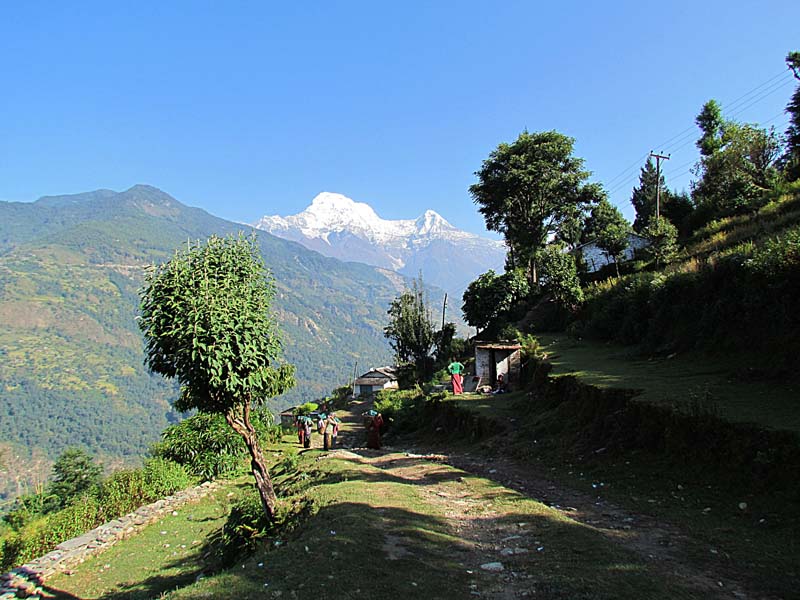
We hiked out from Gurung Lodge to the road where our van picked us up. The driver and his assistant had been sleeping in the van
with our luggage while we were at Gurung Lodge.
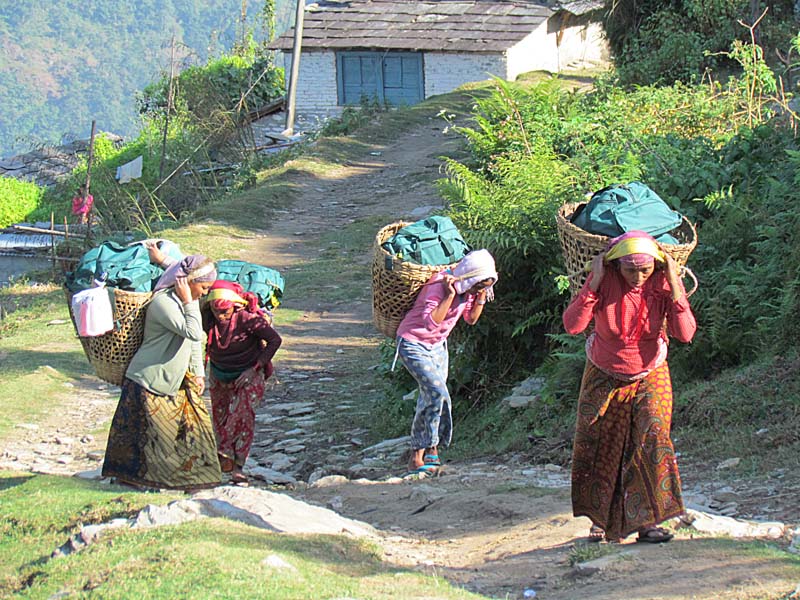
Female porters carrying out our green bags from Gurung Lodge
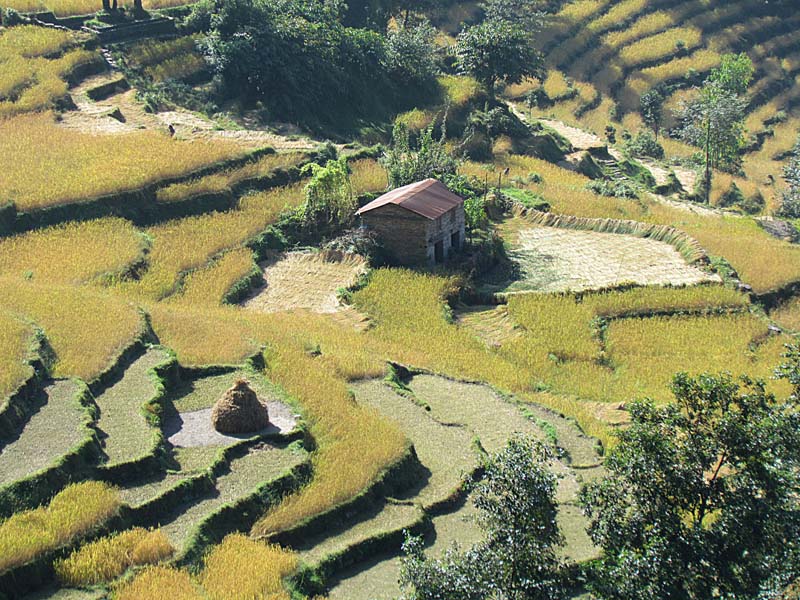
Closeup of terrace fields as seen from the trail we were on
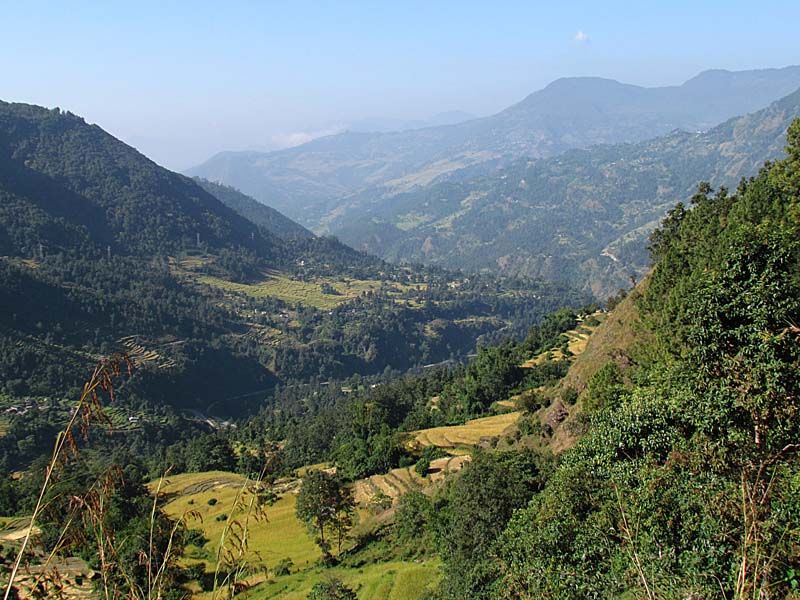
View of the area where we were hiking
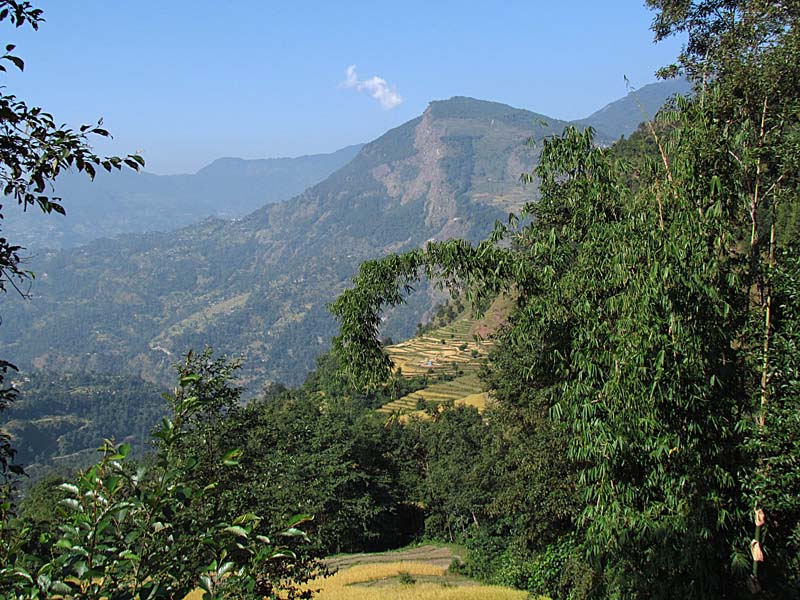
Another view of terraced fields

View of Machapuchare (Fish Tail Mountain) from the roadside on our way back to the town of Pokhara
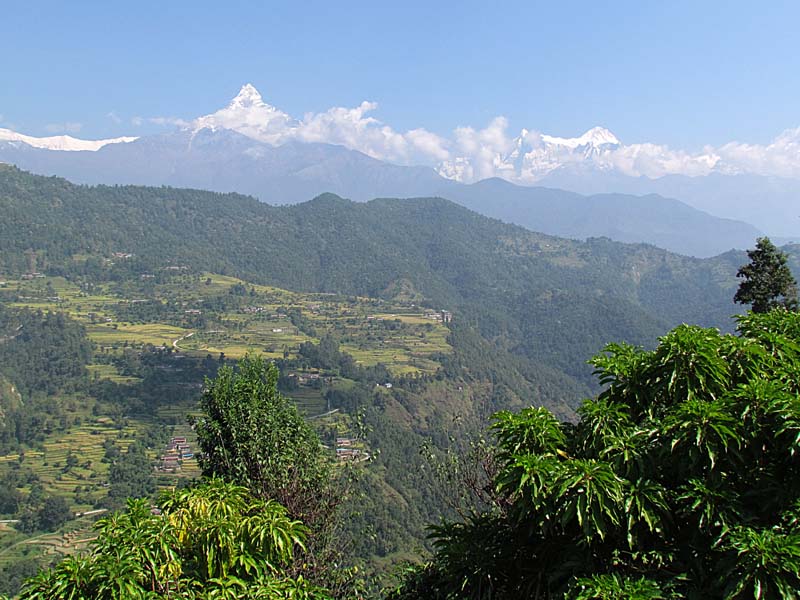
Machapuchare and surrounding mountains in the Annapurna Range
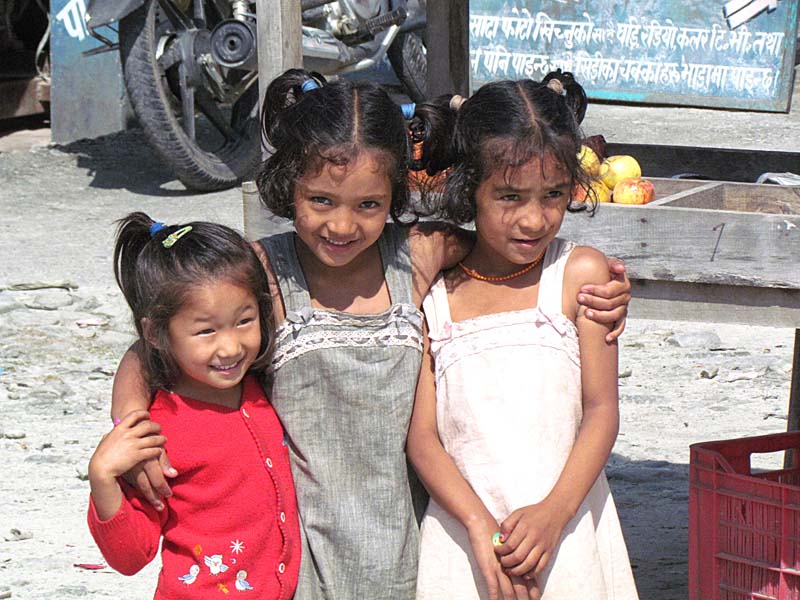
3 kids posing for us as we were in our van on the way to Pokhara
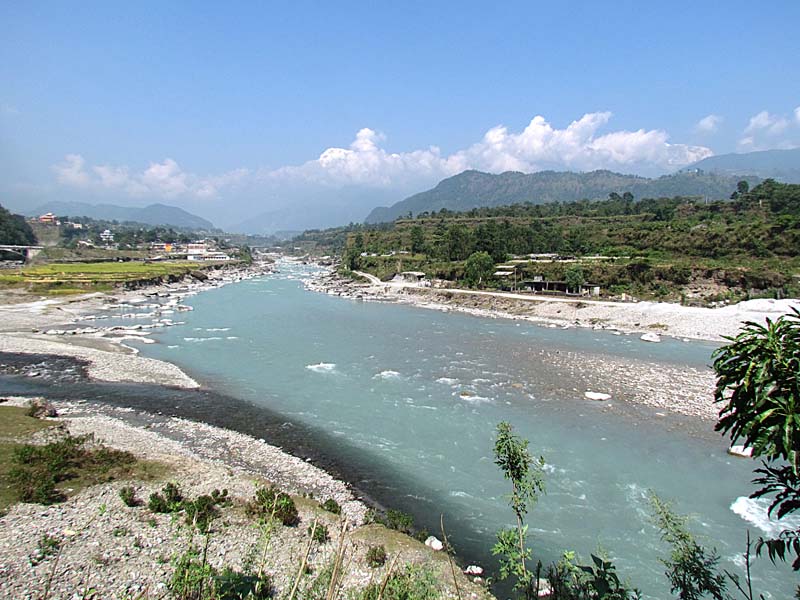
Landscape view near Pokhara
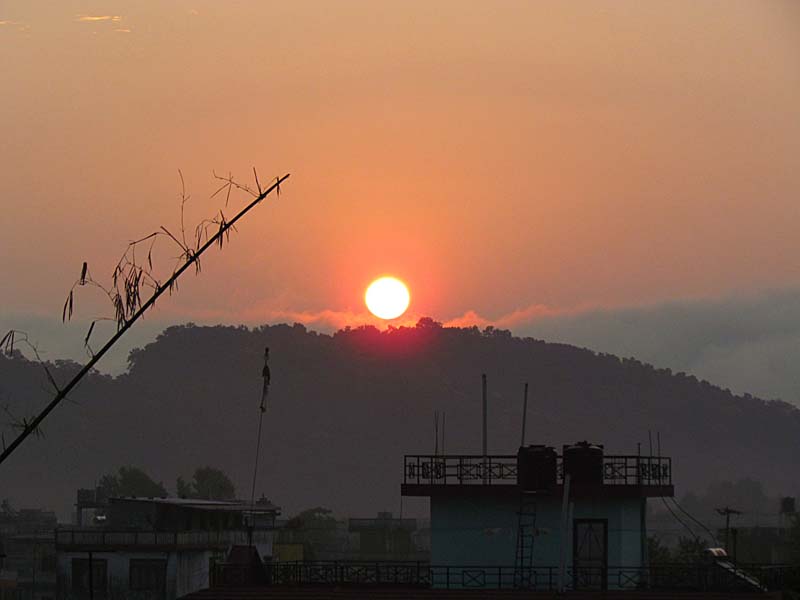
Sunset over the town of Pokhara
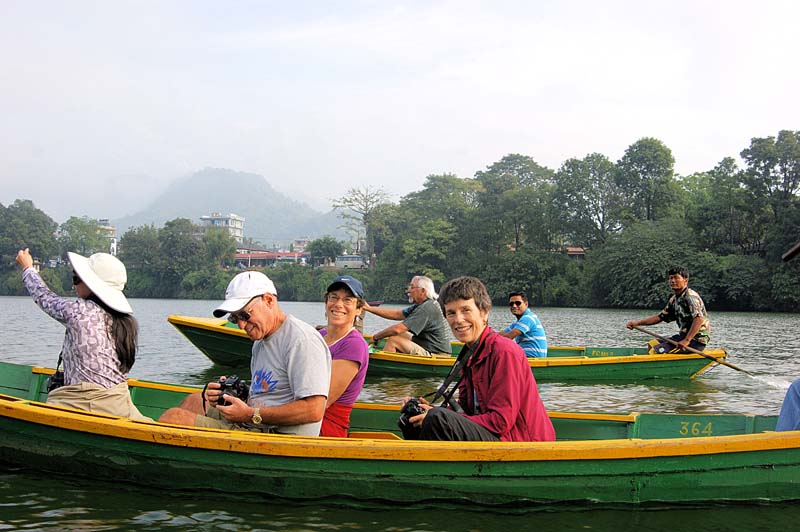
Canoe ride on Lake Phewa in Pokhara - It is the second largest lake in Nepal lying at an altitude
of 2,572 ft, and covering an area of about 1.7 sq miles.
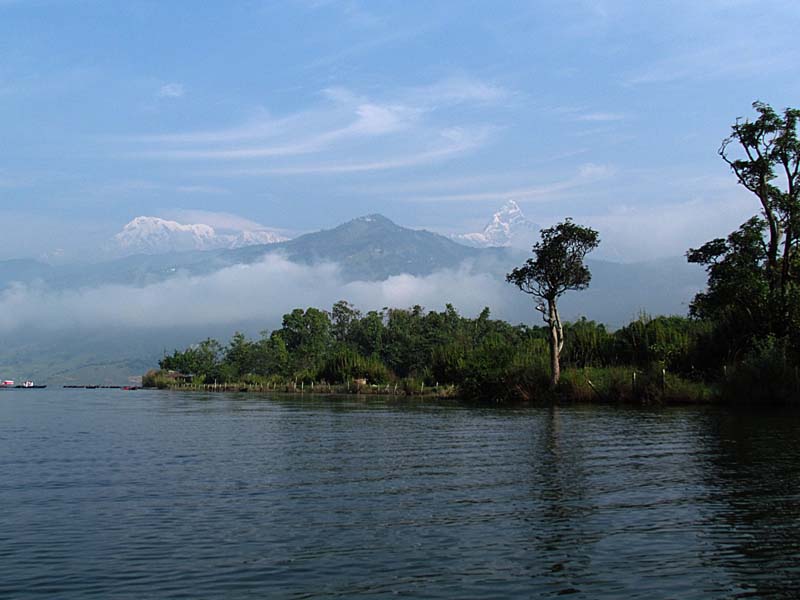
Lake Phewa with Annapurna South, Annapurna I, and Machapurchare in the distance
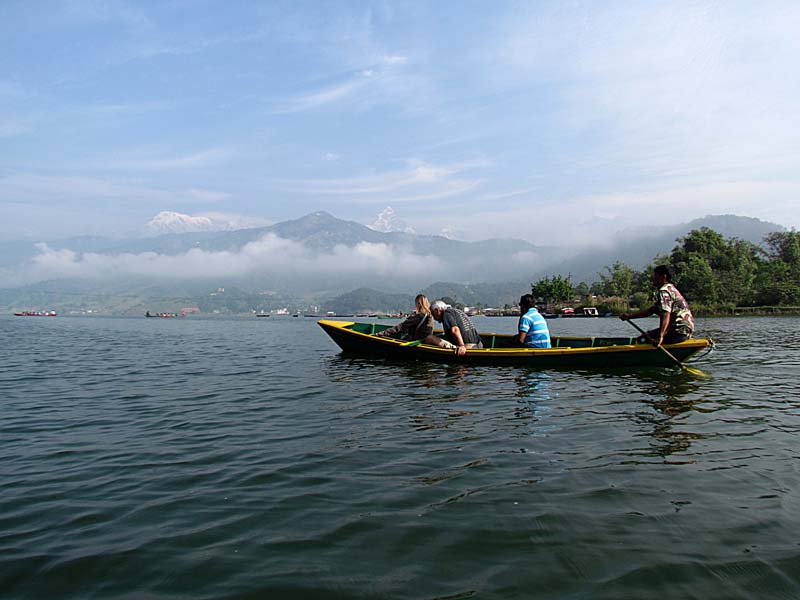
Canoeing on Lake Phewa with the mountains in the background
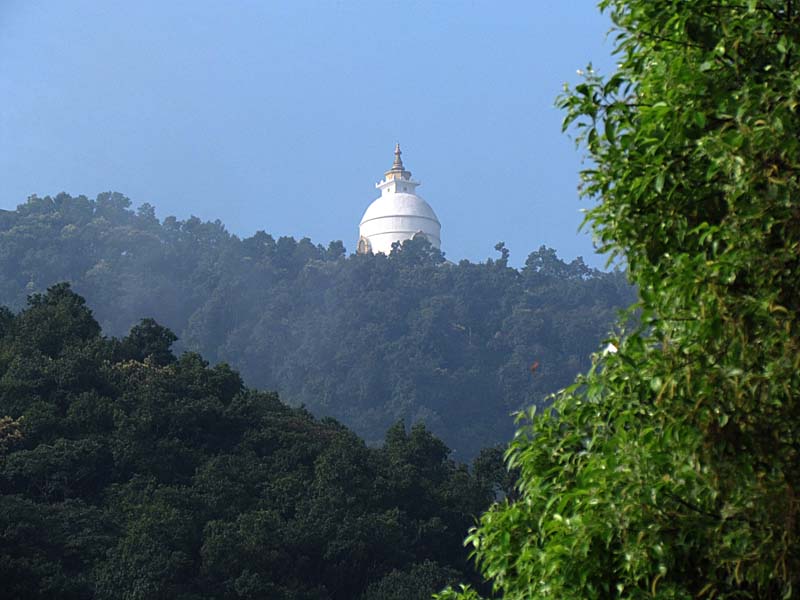
Bindi Basini Temple

Barahi Temple, Hindu temple on an island in Phewa Lake, dedicated to Barahi, who is the god Vishnu in his boar incarnation.
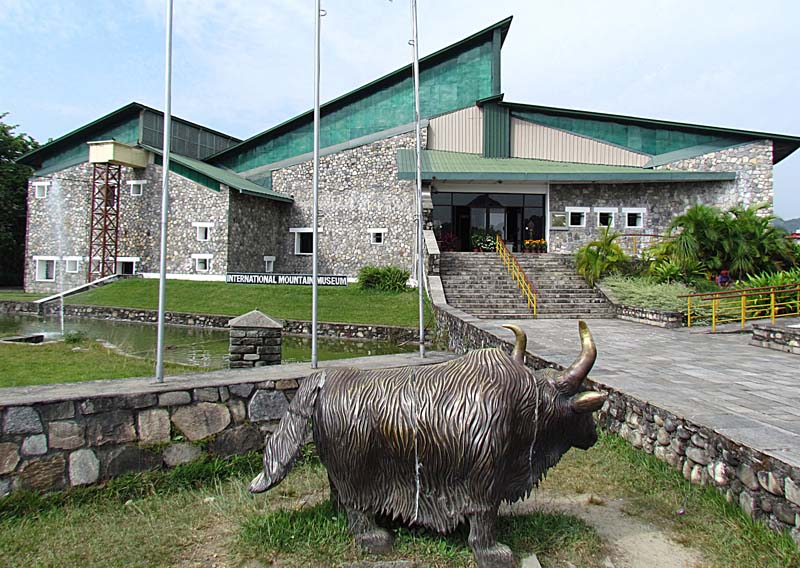
International Mountaineering Museum in Pokhara, devoted to the mountains of Nepal and the mountaineers who climbed them.
Inside you can see original gear from many of the first Himalayan ascents, as well as displays on the history,
culture, geology and flora and fauna of the Himalaya.
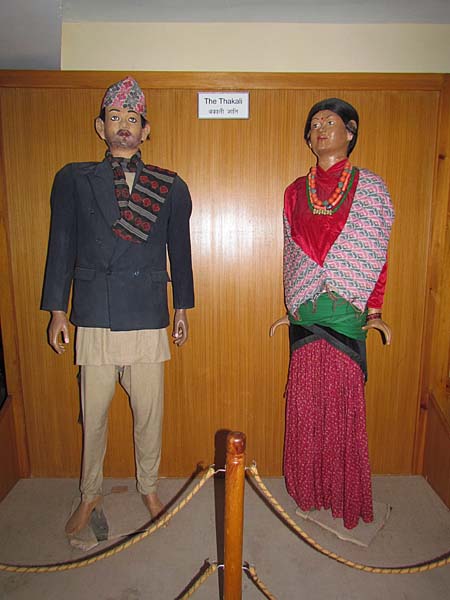
Inside the Mountaineering Museum showing traditional clothing of the Thakali people of Nepal.
The
Thakalis come from central Nepal and most are small farmers. Many also run small hotels.
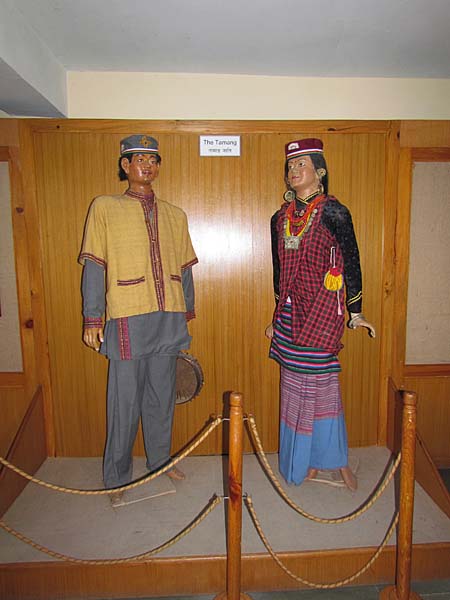
This exhibit shows the traditional clothing of the Tamang people of Nepal.
The Tamangs are the largest Tibetan-Brumese ethnic group in Nepal, largely sedentary farmers and laborers.
Many Tamang women have been forced into prostitution in Nepal and India. Historically, the Tamangs
have been relegated to bonded labor and were dependent on menial work. They were prevented
from joining the government or the military and still remain very poor.
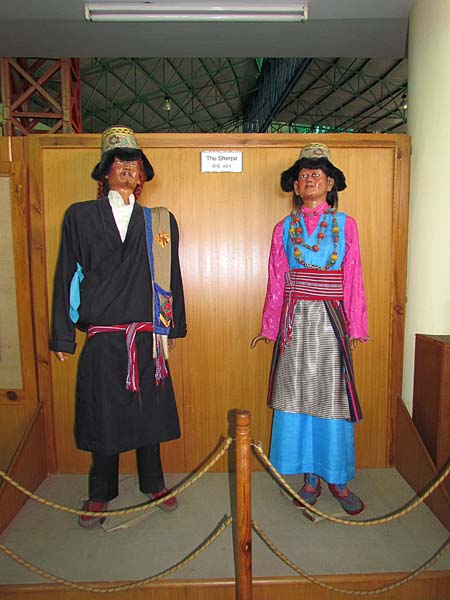
Traditional Sherpa dress. Sherpas live high in the mountains of eastern and central Nepal, including the foot of Mt. Everest and are
probably the best known Nepali ethnic group. Originally from Tibet, they settled in Nepal more than 500 years ago and were
probably nomadic herders until the potato was introduced in the mid 19th century. The Sherpas are Buddhists, and their name
has become synonymous with mountaineering and trekking.
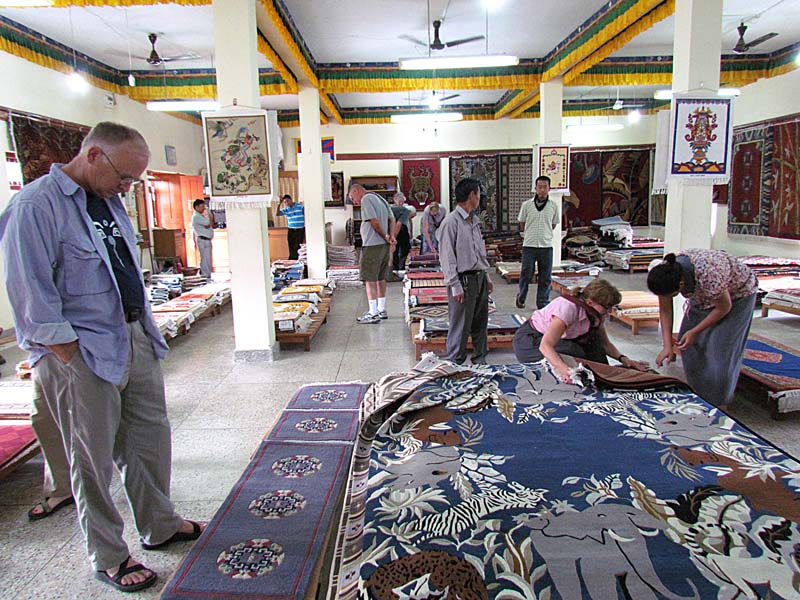
Inside a Tibetan handicraft shop. We went to a Tibetan refugee area in Pokhara in Nepal and several of us purchased some of their
handicrafts, in part to help them survive. I purchased several Tibetan handmade purses here.
Many Tibetan refugees live in the Pokhara area.
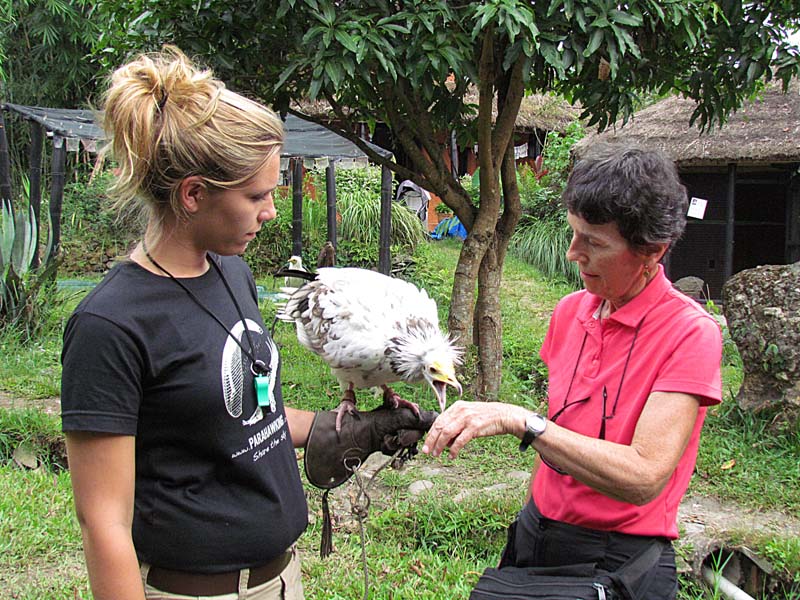
Yes, he bit me. Guess he thought I looked tasty. This bird is an Egyptian vulcan at the Himalayan Raptor Rescue.
Himalayan Raptor Rescue is a non profit, privately run organization based at Maya Devi Village. Maya Devi is a
guest house, restaurant, and activity center in Pokhara.
The primary objective of the Raptor Rescue is to care for sick, injured and orphaned birds of prey with a view to rehabilitating and releasing
them back into the wild where possible.

Egyptian vulcan with a "don't mess with me" look on his face.
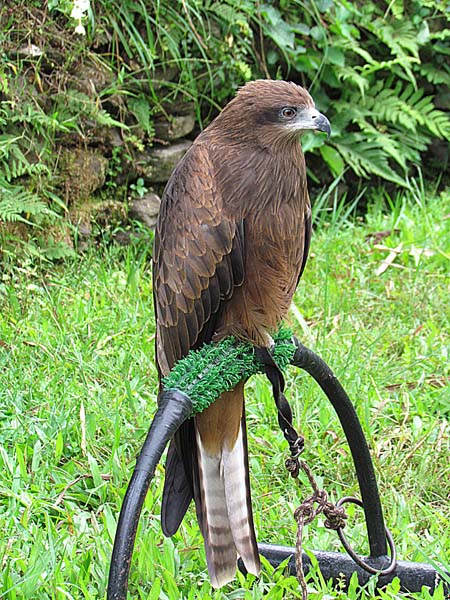
Black kite at the bird sanctuary in Pokhara. Black kites are Nepal's most populous bird of prey.
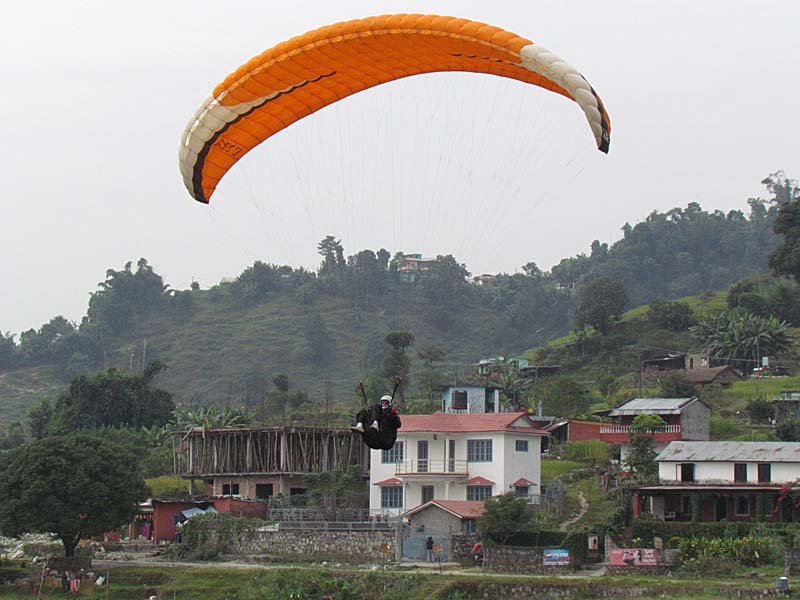
Hang gliding in Pokhara. None of us opted to take a flight. Maya Devi is the center for Paragliding in Nepal,
which was pioneered by one of Maya Devi's owners, Adam Hill.
Pokhara is one of the world's premier paragliding destinations.
Link to Page Eight of Nepal - Seti River Rafting and Camp
Link to Page One of Nepal
Pat's Home Page